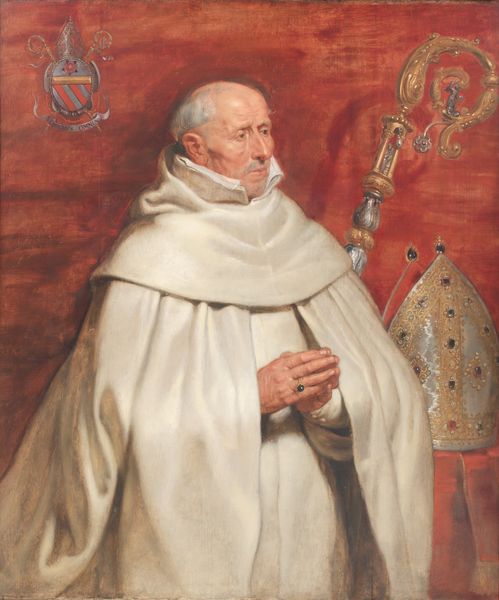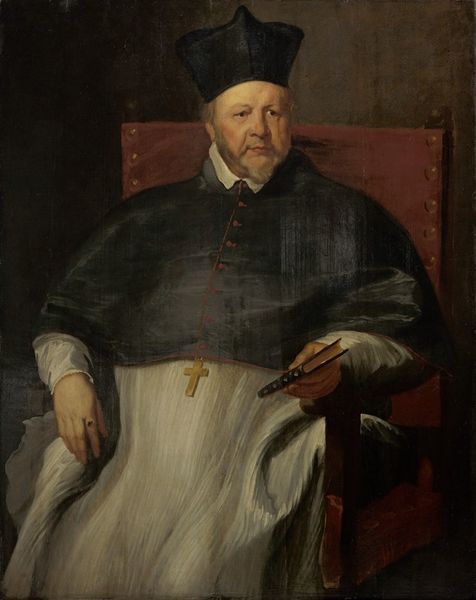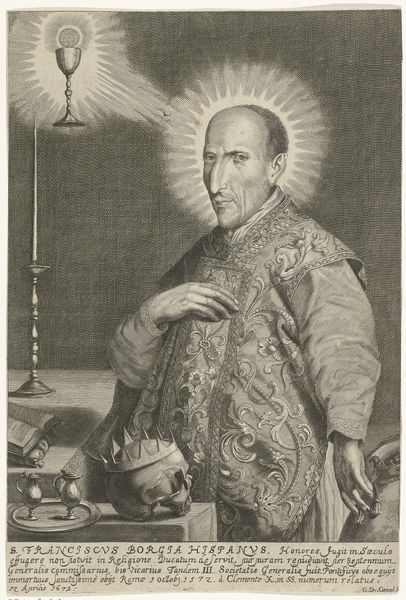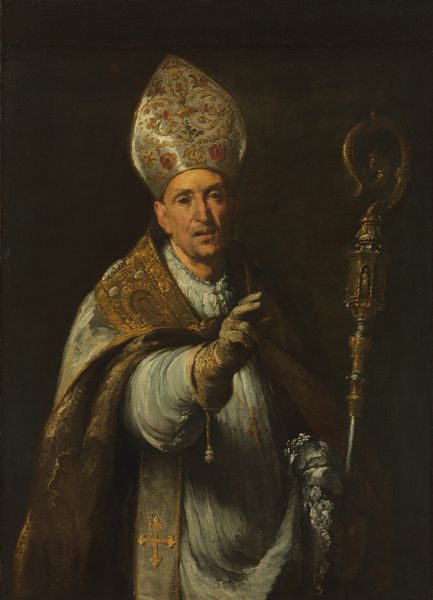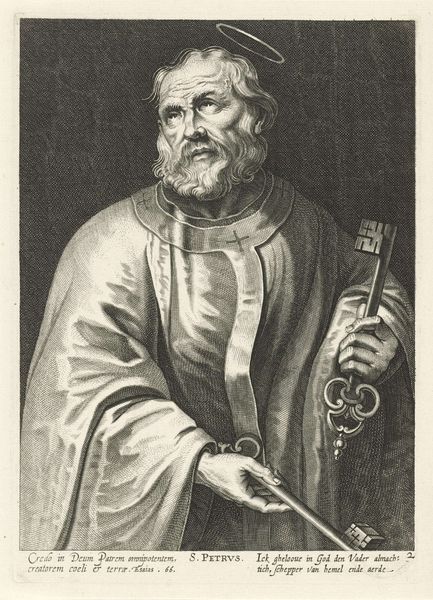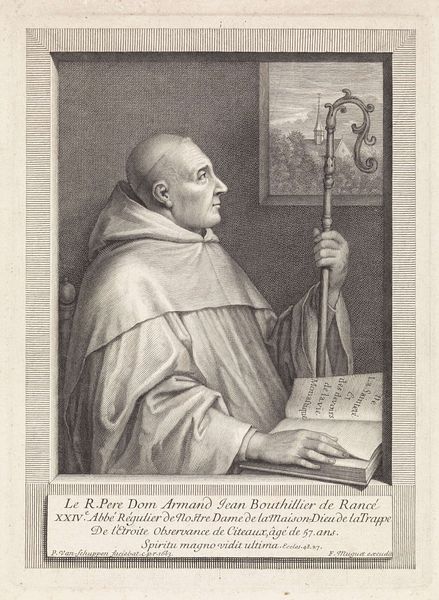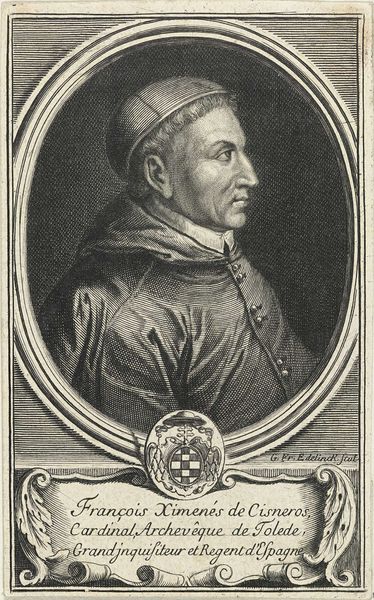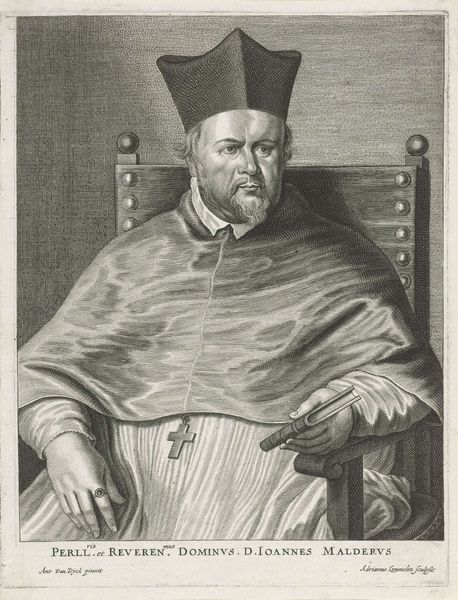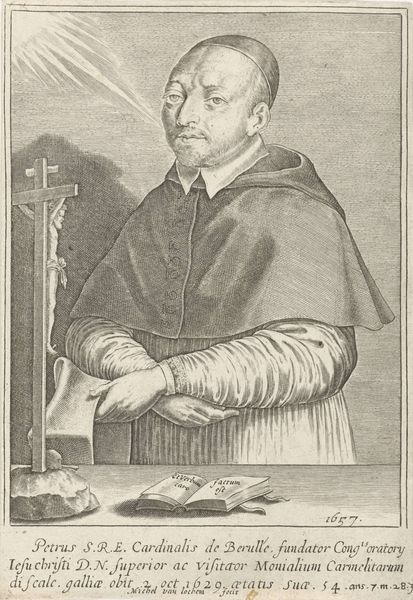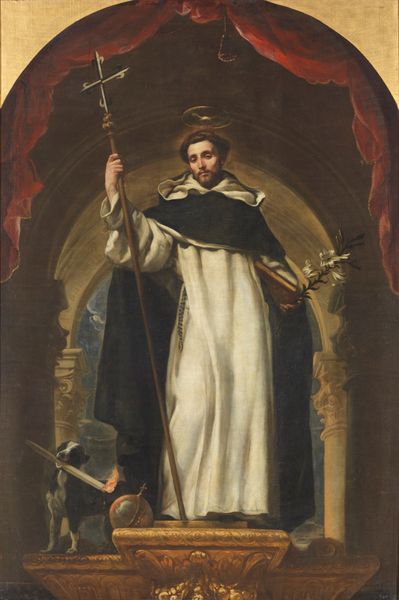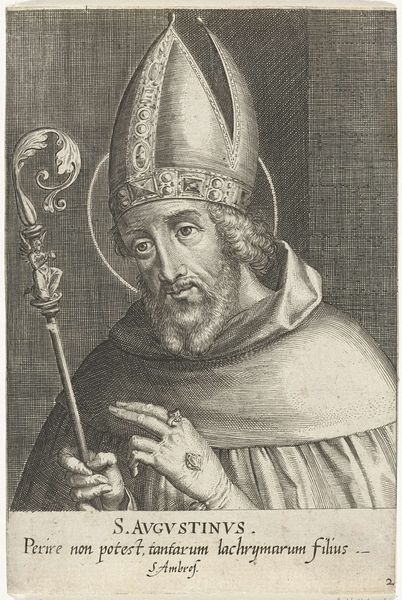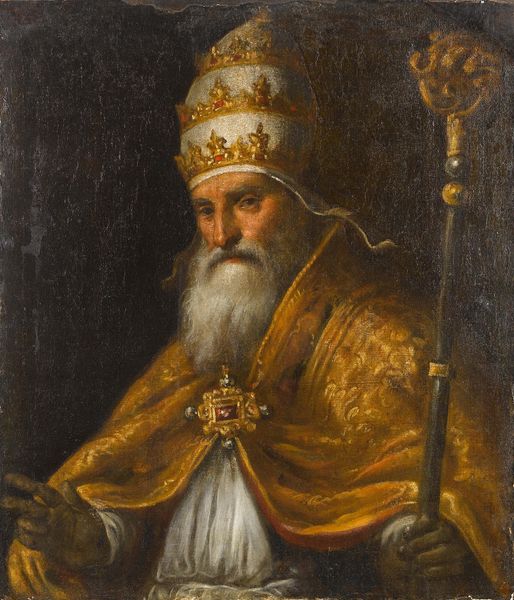
Copyright: Public Domain: Artvee
Peter Paul Rubens painted this portrait of Matthaeus Yrsselius, likely in the early 17th century, capturing the likeness of a prominent figure within the Catholic Church. Rubens, a leading artist in Antwerp, then part of the Spanish Netherlands, received numerous commissions from religious institutions. This portrait, with its meticulous depiction of Yrsselius's vestments, staff, and mitre, speaks to the institutional power and visual language of the church. The inclusion of a coat of arms and other status symbols reinforces this impression. To understand its full meaning, we might consider how the Catholic Church in the Spanish Netherlands used art to assert its authority amid the religious and political upheavals of the time. Through careful archival research, including the study of church records and family histories, we can better appreciate the dialogue between artistic representation, religious ideology, and social status. As historians, we recognize that the meaning of art is always contingent on the specific cultural and institutional conditions in which it is created and viewed.
Comments
No comments
Be the first to comment and join the conversation on the ultimate creative platform.
